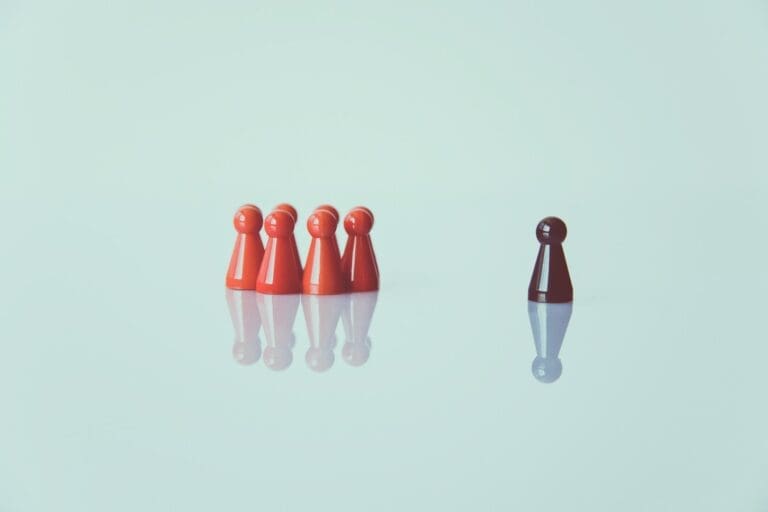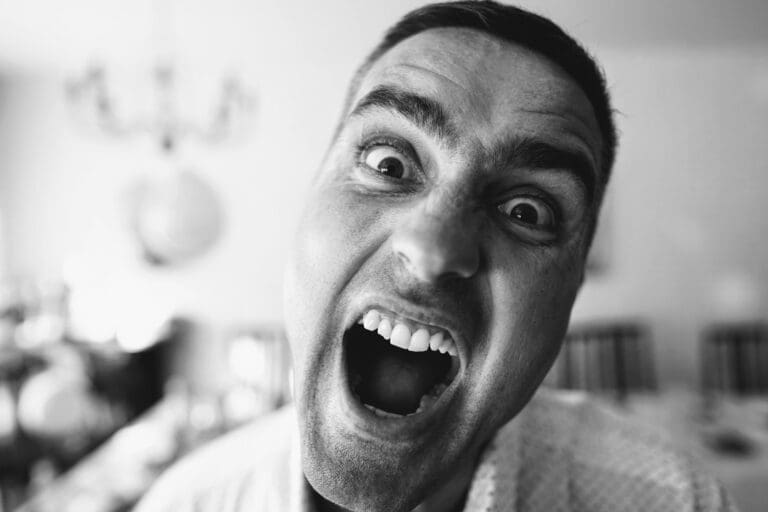Break the cycle of blame and become the hero of your own story
Looking at a challenge, have you ever found yourself thinking, “Why does this always happen to me?” or “If only they would change, everything would be better”?
If so, you’re not alone – and you’re not deficient. Even the smartest among us fall into the trap of victim thinking.
Throughout my career, I’ve observed how intelligent professionals – despite their capabilities – can become trapped in cycles of frustration and blame when facing obstacles.
The irony is that those with the strongest analytical minds sometimes struggle the most to escape this mindset prison.
What’s stranger still is that we often don’t recognize when we’re stuck in victim mode. It disguises itself as reasonable analysis, justified frustration, or even principled stands. The victim mentality is insidious – it feels like clear thinking while quietly sabotaging our ability to move forward.
I’ve caught myself in this trap more times than I’d like to admit. As a project manager juggling multiple demands and my own entrepreneurial ventures, I’ve found myself focusing on the constraints rather than possibilities – building cases for why progress was difficult instead of finding ways to create it.
But here’s what I’ve discovered: the most transformative skill we can develop isn’t another productivity technique or business strategy – it’s the ability to shift from victim to hero in our own stories.
This isn’t about toxic positivity or ignoring real challenges. It’s about reclaiming your power when it matters most.
In this article, I’ll share why smart people get stuck in victim mode, what it costs us, and most importantly, how to escape it. The difference between where you are and where you want to be might just be a mindset shift away.
The invisible trap of victim mode
When we’re caught in victim mode, we focus primarily on the external factors constraining our progress. In professional settings, this often manifests as an ongoing narrative about why circumstances make success difficult or impossible.
This is the paradox of victim mode: it feels like clarity – like you’re simply seeing reality as it is – while simultaneously robbing you of your agency.
The victim mentality isn’t about playing weak or helpless. In fact, it often manifests in smart, capable people as:
- Sophisticated analysis of everything going wrong
- Detailed explanations of why progress isn’t possible
- Convincing arguments about who or what needs to change first
- Righteous frustration at obstacles and inefficiencies
- Mental energy spent on what “should” be different
The more intelligent you are, the more compelling your victim narrative becomes – even to yourself. Your analytical mind creates airtight cases for why you’re at the mercy of circumstances, complete with evidence and logical reasoning.
How do you know if you’re caught in this trap? Listen for these telltale signs in your internal dialogue:
- “I can’t because they won’t…”
- “This always happens to me…”
- “If only [person/situation] would change…”
- “That’s just the way it is…”
- “There’s nothing I can do about it…”
Each of these thoughts feels true in the moment, but each surrenders your power to external forces.
What makes this trap particularly dangerous is what psychologists call the “confirmation bias” – our tendency to notice evidence that supports our existing beliefs while filtering out contradictory information. Once we’ve adopted a victim perspective, we unconsciously collect evidence to reinforce it, creating a self-fulfilling prophecy.
The cost?
Our problems remain unsolved. Our goals stay unreached. Our potential lies dormant. And perhaps worst of all, we experience the ongoing stress and frustration of feeling powerless, which takes a toll on our mental health, relationships, and physical wellbeing.
But there’s good news: understanding why our brains default to victim mode is the first step toward escaping it.
Why your brain prefers victimhood
Think about the last time you faced a significant setback. What was your immediate reaction?
For most of us, the instinctive response is to look outward – to identify the external factors that caused our disappointment. This isn’t a character flaw; it’s how our brains are wired.
Our tendency toward victim thinking stems from several psychological mechanisms that once served our ancestors well but now often work against us:
First, there’s our brain’s negativity bias – we’re hardwired to spot threats and problems more readily than opportunities. This made perfect sense when survival depended on quickly identifying dangers, but in today’s complex professional environment, this vigilance for what’s wrong can keep us focused on obstacles rather than solutions.
Second, we have an innate drive to conserve mental energy. Taking ownership is cognitively demanding – it requires creative problem-solving, emotional regulation, and the discomfort of confronting our own limitations.
Blaming external factors, by contrast, provides immediate emotional relief without requiring us to change or adapt.
Third, there’s the matter of identity protection. Acknowledging our role in problems threatens our self-image as competent professionals. It’s far less threatening to attribute challenges to factors beyond our control than to question our own capabilities or choices.
I’ve observed this dynamic play out countless times in team settings. When projects fall behind or initiatives stall, discussions often center on external constraints rather than response strategies.
While identifying these constraints isn’t wrong, exclusively focusing on them keeps teams stuck in explanation mode rather than solution mode.
This pattern reveals an uncomfortable truth: victim mode isn’t just a passive state we fall into – it often serves a psychological purpose:
- It protects us from the vulnerability of ownership
- It shields us from the discomfort of growth
- It provides a ready explanation for why things aren’t going as planned
- It allows us to feel righteous rather than responsible
Perhaps most insidiously, victim thinking can become a habit – a default lens through which we view challenges. The more we practice this perspective, the more automatic it becomes, until it’s our brain’s go-to response to adversity.
So how do we begin to shift this deeply ingrained pattern? It starts with recognizing your personal victim triggers.
Pay attention to the specific situations that most reliably pull you into victim thinking. Is it when deadlines tighten? When you receive criticism? When collaborating with certain personalities? When you feel your expertise isn’t being recognized?
For me, the clearest indicator I’m slipping into victim mode is when I feel a surge of righteous indignation – that sense of “Don’t they understand how unreasonable this is?” When I catch myself mentally composing elaborate justifications for why something can’t be done, I know I’ve fallen into the trap.
Identifying these patterns isn’t about self-judgment – it’s about developing awareness of when you’re most vulnerable to disempowering thoughts. This awareness creates a crucial moment of choice between continuing down the victim path or shifting to a more empowering perspective.
The question then becomes: what does the alternative look like? What mindset allows us to acknowledge challenges while maintaining our power to address them?
The hero mindset framework
The shift from victim to hero thinking isn’t about denying difficulties or blaming yourself for every challenge. Rather, it’s about approaching obstacles with agency instead of resignation, creativity instead of complaint, and ownership instead of blame.
At its core, the hero mindset is built on what psychologists call an “internal locus of control” – the belief that while you can’t control everything that happens, you always control your response. It’s the difference between “Things happen to me” and “I happen to things.”
What does this look like in practice?
Instead of focusing exclusively on constraints, the hero perspective acknowledges them while simultaneously exploring available options. Rather than waiting for ideal conditions, it asks what progress is possible with current resources.
This shift illustrates the core elements of the hero mindset:
- Radical ownership: Taking responsibility not just for your actions but for your situations. This doesn’t mean blaming yourself – it means claiming your power to influence outcomes.
- Solution focus: Directing your mental energy toward “What now?” rather than “Why me?” or “Who’s fault?”
- Resource orientation: Seeing what you have rather than only what you lack – then leveraging those resources creatively.
- Action bias: Favoring small concrete steps over perfect theoretical solutions.
This mindset isn’t about positive thinking or denying reality. In fact, the hero perspective often requires unflinching honesty about challenges and limitations. The difference is in what you do with that information.
When faced with unrealistic timelines or resource constraints, the victim response is to explain why success is impossible and why better planning should have occurred.
The hero response acknowledges the challenge directly while focusing on possibilities:
“This timeline presents significant challenges. Here’s what’s possible within this timeframe, here are the tradeoffs we’d need to make, and here’s an alternative approach that might better serve the core objectives.”
One approach focuses on constraints; the other focuses on possibilities.
I’ve found this shift particularly powerful in my entrepreneurial endeavors, where uncertainty and obstacles are constant companions. When I catch myself thinking, “I don’t have enough time to grow my business alongside my day job,” I consciously reframe to: “Given the time I have available, what’s the highest-leverage action I can take today?”
This isn’t semantic gymnastics – it’s a fundamental reorientation that changes what I notice, what I prioritize, and ultimately, what actions I take.
Practical techniques to escape victim mode
Understanding the victim-hero framework is one thing; implementing it daily is another challenge entirely. Here are practical techniques you can use to interrupt the victim pattern and activate the hero mindset when it matters most:
The language audit
Our words shape our reality more than we realize. The first step in shifting from victim to hero is becoming conscious of your language – in conversation and in your internal dialogue.
When facing a challenge, pay attention to phrases like:
- “I have to…” (implies external force)
- “They make me…” (surrenders choice)
- “I can’t because…” (focuses on limitations)
Replace these with language that reclaims your agency:
- “I choose to…” (acknowledges your decision)
- “I’m deciding to…” (recognizes your control)
- “How can I…” (opens possibilities)
Keeping a small note with these contrasting phrases visible during difficult conversations or when approaching complex problems can help catch victim language before it reinforces a disempowered mindset.
The ownership question
When you find yourself focusing on external factors, interrupt the pattern with this question: “What part of this situation can I influence, even if it’s small?”
This question doesn’t deny the reality of external challenges. Instead, it directs your attention to your sphere of control – the aspects of the situation where your actions can make a difference.
This simple redirect can shift focus from the unchangeable to the actionable, from complaint to strategy, often revealing possibilities that weren’t visible when attention was fixed on constraints.
The perspective flip
This technique involves deliberately adopting a different viewpoint to generate new possibilities.
When stuck in victim thinking, ask: “How might someone I admire approach this challenge?” This creates psychological distance from your immediate frustration and taps into models of resilience and creativity.
Think about specific mentors or leaders you respect. Consider how they might handle the situation – what approaches they might take, what questions they might ask, what principles might guide their response. This mental exercise instantly expands your perception of available options.
The tiny action protocol
Victim mode thrives in abstraction and overwhelm. One of the most powerful antidotes is taking a single concrete step, no matter how small.
When you notice yourself dwelling on obstacles, commit to one immediate action within your control. Don’t worry about solving the entire problem – just focus on movement.
Establish a simple rule: before complaining or explaining why something isn’t possible, take one tangible action toward your goal. This might mean spending just 15 minutes on a business plan, sending one outreach email, or creating a rough outline for a content piece.
These small actions rarely solve larger challenges immediately, but they consistently shift energy from passive frustration to active engagement – from feeling stuck to feeling in motion. This psychological shift often sparks creative solutions that aren’t visible when focused on limitations.
The reframe ritual
Our brains naturally tell stories to make sense of events, but we can actively reshape those narratives.
When faced with a setback, consciously create multiple interpretations of the same situation. Ask:
- “What opportunity might be hidden in this challenge?”
- “How might this obstacle be serving my growth?”
- “What would this look like if it were happening for me rather than to me?”
This isn’t about spinning failure as success, but about generating interpretations that preserve your sense of agency and create paths forward. The process can lead to insights and approaches that wouldn’t emerge from a fixed victim perspective.
The daily hero habit
Like any meaningful change, the shift from victim to hero thinking requires consistent practice. Build a daily ritual that reinforces your capacity for ownership and action.
Each morning, take five minutes to write down:
- One situation where you might default to victim thinking today
- How you can approach it with ownership instead
- One specific action you commit to taking regardless of circumstances
This proactive identification of potential victim triggers helps catch them before they take hold. The pre-commitment to specific actions ensures maintaining momentum even when challenges arise.
The most powerful aspect of these techniques is their compound effect. Each small shift from explanation to action, from constraint to possibility, builds mental pathways that make the hero response increasingly automatic.
Taking back your story
The distinction between victim and hero thinking isn’t about pretending challenges don’t exist or taking blame for circumstances beyond your control. It’s about where you place your attention and energy when facing those challenges.
Every obstacle presents a fundamental choice: Do you focus on why you can’t, or how you might? Do you explain or act? Do you see yourself as subject to your circumstances or as an author of your response?
This choice determines not just your effectiveness but your experience of work and life. The victim perspective keeps you stuck in frustration and powerlessness. The hero perspective opens possibilities for growth and achievement even in difficult situations.
The shift isn’t always easy. Our brains will continue to default to victim thinking in stressful moments. But with practice and the techniques outlined here, you can catch yourself earlier, redirect your focus faster, and develop the habit of ownership that characterizes true leadership – of yourself and others.
What challenge are you facing right now where you might be stuck in victim thinking? What would it look like to approach it as the hero in your story? What’s one small action you could take today to shift from explanation to ownership?
The story you tell yourself about your challenges shapes everything that follows. Make it one where you hold the pen.







